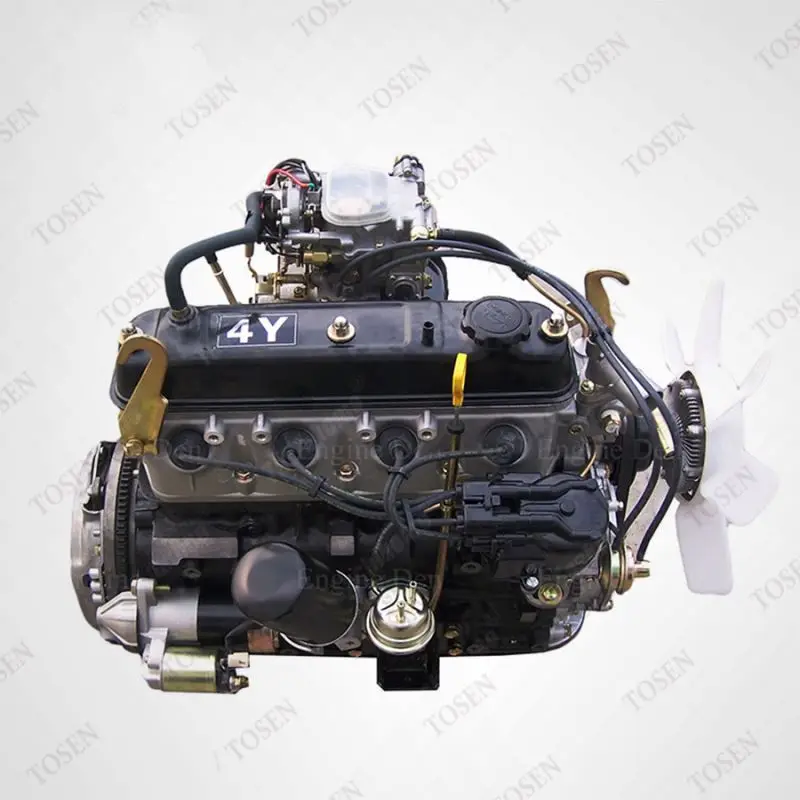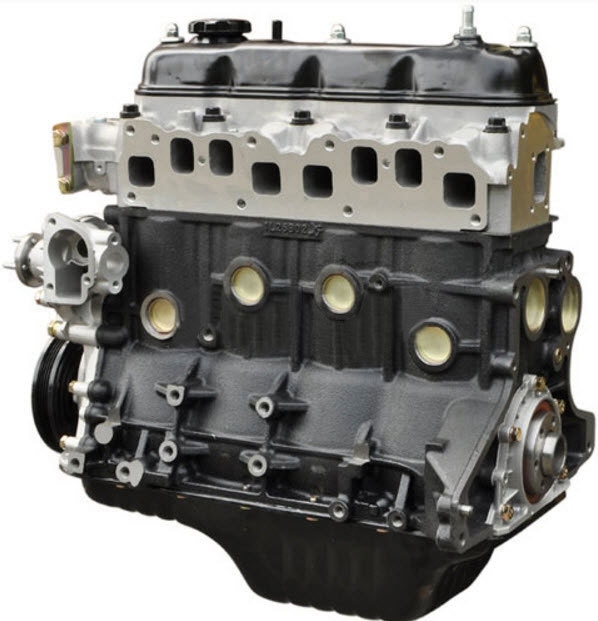A Complete Guide to Understanding the 4Y Engine’s Performance Capabilities
A Complete Guide to Understanding the 4Y Engine’s Performance Capabilities
Blog Article
Why the Engine Is the most effective Selection for Performance and Effectiveness in Your Auto
The engine remains a crucial component in auto design, largely due to its substantial influence on both efficiency and efficiency. As advancements in innovation make it possible for smaller engines to supply amazing power while maximizing gas economic climate, the assimilation of functions such as turbocharging and hybrid systems ends up being significantly vital. These advancements not just enhance driving experience however additionally address ecological worries. The inquiry emerges: exactly how do these components coalesce to redefine our understanding of vehicle efficiency? Discovering this equilibrium reveals much deeper understandings into the future of engine design.
Comprehending Engine Kind
Comprehending the different kinds of engines is vital for maximizing efficiency and effectiveness in automobile style. The main engine types include inner burning engines (ICE), electrical engines, and hybrid systems, each offering distinct advantages and restrictions.
Interior combustion engines, which can be further categorized right into gas and diesel variations, depend on the combustion of gas to create power. Fuel engines generally provide greater RPMs and far better acceleration, while diesel engines are recognized for their torque and gas effectiveness, making them perfect for durable applications.
Electric engines, on the other hand, utilize electrical motors powered by batteries or fuel cells. They offer rapid torque distribution, leading to smooth velocity and reduced discharges. The performance of electric engines is dramatically more than that of ICEs, making them a popular selection for eco-conscious customers.
Hybrid systems incorporate both interior burning and electrical engines, leveraging the toughness of both modern technologies. They enhance gas usage by utilizing electric power at reduced speeds and changing to gasoline or diesel for greater rates or much heavier loads.
Selecting the right engine kind is essential for accomplishing desired performance metrics and ecological sustainability in modern auto engineering.
The Effect of Engine Dimension
Engine dimension regularly plays a critical function in figuring out an auto's performance and efficiency. Normally gauged in litres or cubic centimeters, engine dimension straight affects the power output and torque characteristics of a car.
Nonetheless, boosted engine size often associates with decreased gas performance. Smaller engines can deliver ample efficiency for everyday driving while promoting better performance, making them a prominent option in compact and mid-size cars.
Additionally, innovations in engine layout, such as turbocharging and straight fuel shot, allow smaller sized engines to accomplish power levels equivalent to their larger equivalents. This trend emphasizes the relevance of not exclusively focusing on engine dimension but additionally thinking about total automobile layout and innovation (4y engine). Eventually, the effect of engine dimension on efficiency and effectiveness highlights the demand for consumers to analyze their certain driving needs and choices when choosing a vehicle
Advanced Engine Technologies
Advancements in engine technologies have dramatically reshaped the landscape of automobile efficiency and performance, structure upon the foundational ideas developed by engine size. Notably, improvements such as turbocharging and straight gas shot have enabled smaller engines to provide power degrees formerly connected with larger counterparts. Turbochargers compress air getting in the engine, enabling for raised power result without a corresponding rise in engine size, while direct injection optimizes fuel delivery, enhancing combustion effectiveness.
Furthermore, variable valve timing systems have arised as an important modern technology, permitting engines to readjust shutoff procedure based upon driving conditions. This versatility enhances both performance throughout velocity and gas effectiveness during cruising. Hybrid and electric engine technologies further illustrate the change in vehicle design, incorporating traditional inner burning engines with electrical motors to make the most of efficiency while reducing exhausts.
In addition, innovations in materials science have actually brought about lighter, a lot more resilient engine components, better boosting performance and longevity. The integration of advanced electronic devices and engine control systems also permits for real-time changes, guaranteeing optimal efficiency across numerous conditions. Collectively, these innovative engine innovations not just article source enhance vehicle efficiency but additionally add to an extra sustainable vehicle future, demonstrating the recurring development of engine design.
Harmonizing Power and Efficiency
Striking a balance in between power and effectiveness is crucial in contemporary automotive style as manufacturers look for to fulfill progressively rigorous discharges laws while satisfying customer need for performance (4y engine). The difficulty depends on enhancing engine qualities to supply robust power result without sacrificing fuel economy
To attain this balance, designers employ different approaches, such as turbocharging, which enhances engine power by requiring in even more air, permitting a smaller engine variation that boosts gas efficiency. Variable valve timing modern technologies additionally play a significant role, allowing engines to adjust their efficiency characteristics based on driving problems, therefore enhancing both power and efficiency.
Moreover, innovations in products and manufacturing techniques have actually caused lighter engine parts, which lower total vehicle weight and improve fuel effectiveness without jeopardizing power. Hybrid innovations have actually likewise become a feasible remedy, incorporating typical inner burning engines with electrical powertrains to give an increase in efficiency while keeping lower discharges.

Future Patterns in Engine Design

Furthermore, the growth of advanced products, such as high-strength alloys and lightweight composites, is established to transform hop over to these guys engine components. These products not only minimize weight but likewise boost thermal effectiveness, therefore optimizing efficiency. In addition, producers are discovering variable compression ratios, enabling engines to adjust to different driving conditions, boosting both power output and fuel economic situation.
Further, the increase of expert system and maker understanding in engine design is allowing anticipating upkeep and real-time efficiency optimization. This modern technology can result in engines that self-adjust for optimal effectiveness based upon driving patterns.

Verdict
In conclusion, the engine works as a crucial part in achieving optimum performance and efficiency in contemporary vehicles. Advanced innovations, such as turbocharging and hybrid systems, enhance power result while minimizing fuel consumption and discharges. The interaction between engine size and style continues to progress, driving technologies that stabilize electrifying efficiency with ecological sustainability. As vehicle design advances, the focus on establishing efficient, powerful engines will certainly continue to be extremely important fit the future of transport.
In addition, improvements in engine style, such as turbocharging and direct gas injection, allow smaller sized engines to accomplish power levels comparable to their bigger equivalents.Innovations in engine modern technologies have significantly improved the landscape of vehicle efficiency and performance, structure upon the foundational principles developed by engine size. Turbochargers compress air getting in the engine, enabling for increased power result without a matching increase in engine dimension, while direct shot optimizes gas delivery, boosting combustion performance.
Crossbreed and electric engine technologies additionally illustrate the change in automotive style, combining standard internal combustion engines with electrical motors to maximize effectiveness while reducing discharges.
Jointly, these advanced engine innovations not just boost vehicle efficiency yet also add to an extra sustainable vehicle future, showing the ongoing development of engine layout. (4y engine)
Report this page